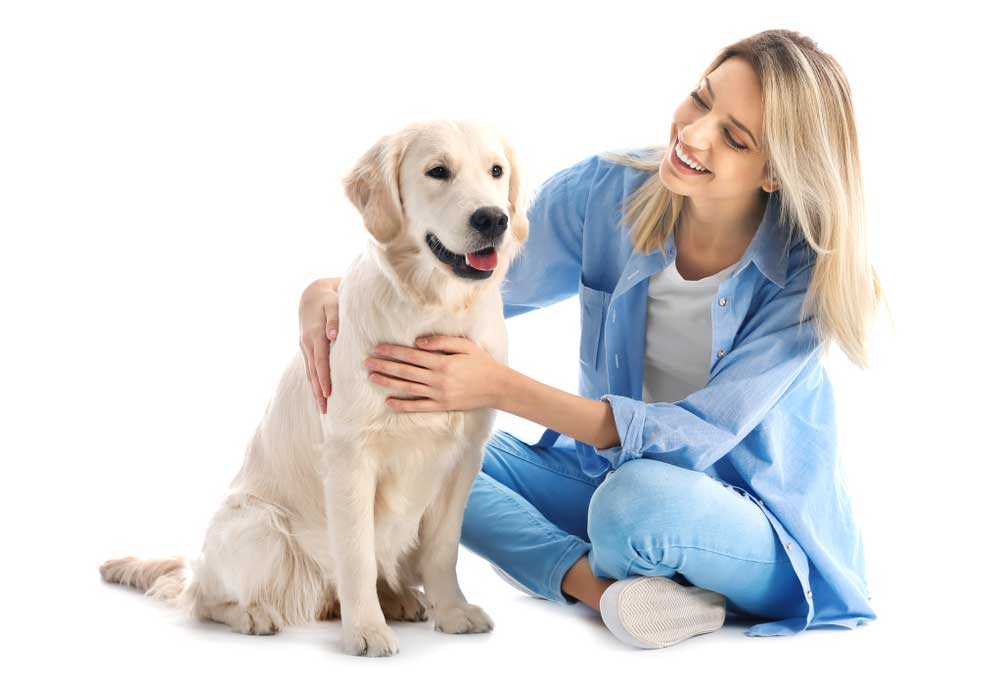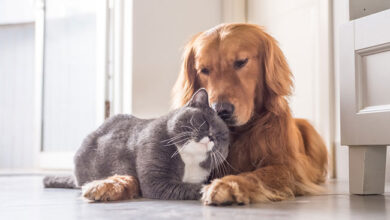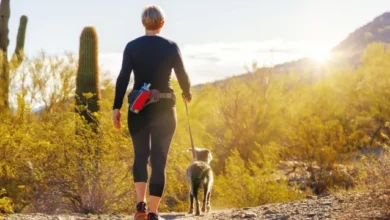
Our pets rely on us to keep them fed, safe and healthy. When disaster strikes, they are even more dependent on us. Since a disaster can strike at any time, you need to make sure you’re prepared – ahead of time. Being caught off guard when disaster strikes is the absolute worst thing that you can be. Here are six emergency preparedness tips on how to keep your pets safe during a disaster.
1. Keep an Updated Copy of Your Pet’s Identification Information
Make sure your pet can be identified either by a microchip or collar ID tag. Also, make a point always to keep the information up-to-date. Many pet parents forget to update a pets microchip information or collar tag when changing vets or moving to a new location.
2. Stock a Pet Emergency Go-Kit
A pet emergency go-kit should contain everything you need to keep your pet safe and healthy. Your pet emergency go-kit should include the following:
- Pet medical records
- Necessary pet medications
- A waterproof container with a three-day supply of your pet’s food. If your pet eats a specific diet, for example, chinchilla food, make sure you have enough of it for an extended period. Chinchillas can’t eat the foods that some other small animals can, so you need to ensure they have plenty of the food they usually eat. In addition, be sure to replace the food supply regularly to ensure its freshness.
- Bottled water
- 2 spare pet bowls – one for food, the other for water
- A spare leash, safety harness, walking jacket or pet carrier
- Waste clean-up supplies such as a disposable litter pan and scoop, and/or baggies
- A list of veterinarians and pet care organizations in the area and their contact info
- Your contact information including name, address, and phone number
- Information on your pet’s feeding routine and any behavioral issues
- A blanket
- Comfort toys
- First aid supplies and a pet first aid guide book
A plastic tote with locking lid is an ideal container in which to keep your pet emergency kit. Also, make sure to keep it in an easy-to-reach place.
3. Keep a Current Photo of Your Pet with You
If you get separated from your pet, having a current picture to show to shelters and to put on flyers can help you locate him quicker. Be sure to take a new photo every year and keep it in your wallet or purse, as well as in your emergency to-go kit.
4. Display a Rescue Decal on Your Home
Put a pet rescue decal on your front door or window to let first responders know there is a pet in the house. Don’t forget to include your veterinarian’s contact information including his or her name, phone number, and address. If you have already evacuated your pet, make sure to write the word “EVACUATED” or “SAFE” on the decal so that everyone knows your pet is safe.
5. Find Out Where Your Pet Hides in Your Home
Knowing where your pet likes to hide when they are frightened will help you find them quickly so you can evacuate faster.
6. Make a List of Pet-Friendly Accommodations
Prepare a list of pet-friendly locations where you can take your pet in case you have to leave your immediate area. Remember that due to health and safety regulations, some emergency shelters for people may not allow pets. Find hotels with pet-friendly policies, or ask relatives or friends if they could house you and your pet. You should also make sure everyone in your immediate family knows the location.
Helping Pets Recover After a Disaster
Once a disaster is over, your pet will still need your help. Their behavior may change dramatically. Help them recover by being aware of their well-being and protecting them from hazards. A few things to watch for include:
- Disorientation, particularly if the disaster has affected the normal scent markers that allow them to find their home.
- Hazards at nose and paw level including debris, spilled chemicals, and other substances that could be dangerous to them.
- Behavior problems such as nervousness, aggressiveness, and defensiveness. If these problems persist, consult with your vet.
In Conclusion
Emergencies and disasters come in many forms, and they can lead to anything from a brief absence from your home to permanent evacuation. The best thing you can do for yourself and your pet is to be prepared. Use the above disaster preparedness tips to keep your furry family member safe and healthy.



